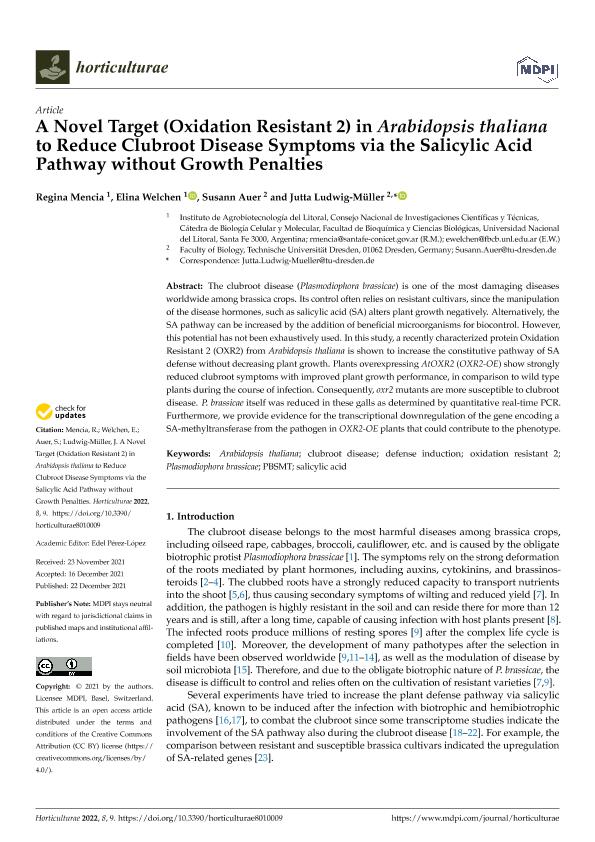Artículo
A Novel Target (Oxidation Resistant 2) in Arabidopsis thaliana to Reduce Clubroot Disease Symptoms via the Salicylic Acid Pathway without Growth Penalties
Fecha de publicación:
01/2022
Editorial:
MDPI
Revista:
Horticulturae
ISSN:
2311-7524
Idioma:
Inglés
Tipo de recurso:
Artículo publicado
Clasificación temática:
Resumen
The clubroot disease (Plasmodiophora brassicae) is one of the most damaging diseases worldwide among brassica crops. Its control often relies on resistant cultivars, since the manipulation of the disease hormones, such as salicylic acid (SA) alters plant growth negatively. Alternatively, the SA pathway can be increased by the addition of beneficial microorganisms for biocontrol. However, this potential has not been exhaustively used. In this study, a recently characterized protein Oxidation Resistant 2 (OXR2) from Arabidopsis thaliana is shown to increase the constitutive pathway of SA defense without decreasing plant growth. Plants overexpressing AtOXR2 (OXR2-OE) show strongly reduced clubroot symptoms with improved plant growth performance, in comparison to wild type plants during the course of infection. Consequently, oxr2 mutants are more susceptible to clubroot disease. P. brassicae itself was reduced in these galls as determined by quantitative real-time PCR. Furthermore, we provide evidence for the transcriptional downregulation of the gene encoding a SA-methyltransferase from the pathogen in OXR2-OE plants that could contribute to the phenotype.
Archivos asociados
Licencia
Identificadores
Colecciones
Articulos(IAL)
Articulos de INSTITUTO DE AGROBIOTECNOLOGIA DEL LITORAL
Articulos de INSTITUTO DE AGROBIOTECNOLOGIA DEL LITORAL
Citación
Mencia, Regina; Welchen, Elina; Auer, Susann; Ludwig Müller, Jutta; A Novel Target (Oxidation Resistant 2) in Arabidopsis thaliana to Reduce Clubroot Disease Symptoms via the Salicylic Acid Pathway without Growth Penalties; MDPI; Horticulturae; 8; 1; 1-2022; 1-19
Compartir
Altmétricas




